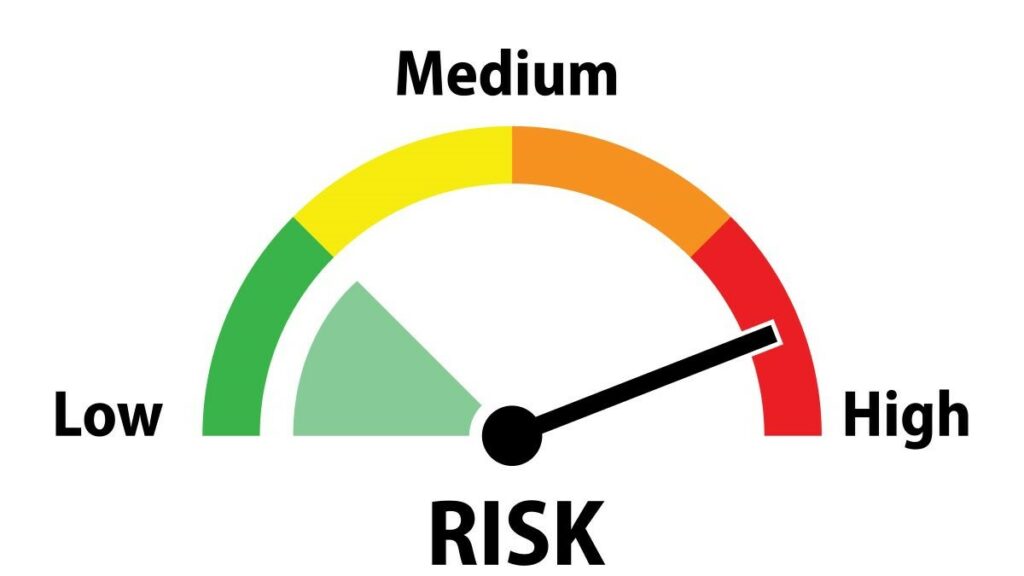Featured image by Nemanja Cosovic
The risk management process involves identifying a business’s potential risks, assessing their probability of occurring and their significance should they occur. The process also includes implementing strategies to mitigate risk. Moreover, it is a vital aspect of any business or software development project.
Undeniably, without a comprehensive risk management plan, a single risk event can cause significant harm to your company or software.
In today’s fast-paced and ever-changing business world, it is therefore essential to have a solid risk management process in place to protect your assets and ensure success. The five-step risk management process is a proven method of managing risks effectively. In this article, we discuss three important things you need to know about this process.
What Is the Risk Management Process?
The risk management process is a well-defined method of determining what risks an organization faces. It also determines how those risks could affect the organization and proposes ways of responding to and mitigating potential risks.
The four essential steps of the process include:
- Risk identification: The process basically entails determining the events that can affect your project or organization. Risks can be identified by analyzing existing documents, conducting a brainstorming process, and leveraging standard methodologies like FMECA (Failure Mode Effects and Criticality Analysis).
- Risk assessment: You can assess risks either using qualitative or quantitative analysis. The quantitative analysis assesses the financial effects of a risk event. Meanwhile, qualitative analysis assesses the criticality of risk based on its probability of occurring and its implications.
- Risk treatment: Risk treatment aims to reduce the likelihood of a risk occurring or minimize its impact if it does occur.
- Risk monitoring and reporting: Risk monitoring and reporting ensures that there are sound forums for reducing risk escalation. It also ensures that the appropriate responses are being taken to mitigate risks.
RELATED ARTICLE: RISKS THAT VENDORS CAN POSE TO YOUR BUSINESS
What Should You Know About the 5-Step Risk Management Process?
It Is a Continuous Process
The five-step risk management process is not a one-time event but a continuous process that requires constant monitoring and evaluation. You should integrate this process into your daily operations and regularly review and update it. This is necessary because new risks can emerge and the effectiveness of your risk management plan can diminish over time.
It Involves a Collaborative Effort
Risk management is not a one-person job. It involves a collaborative effort among all stakeholders. This includes employees, management, customers, and suppliers. The process should involve a comprehensive risk assessment to identify potential risks, and all stakeholders should be involved in the process. Collaboration is especially important, as it ensures that everyone understands the risks involved. Therefore, everyone can contribute to the development of effective mitigation strategies.
You Can Tailor Your Risk Management Plan to Fit Your Organization’s Needs
The five-step risk management process is not a one-size-fits-all solution. You can tailor it to fit your organization’s specific needs and goals. Depending on the nature of your business or software, you may need to prioritize certain risks over others or adopt different mitigation strategies. Therefore, it is important to customize the process to fit your unique situation.
What Are the Benefits of the Risk Management Process?
Implementing a risk management process can provide many benefits to an organization. Here are some of the main benefits:
Reduces Potential Losses
One of the primary benefits of implementing a risk management process is that it helps to minimize potential losses. By identifying and assessing risks, you can take proactive steps to mitigate them before they cause significant harm to your company or software. This can save you both time and money by avoiding costly lawsuits, repairs, or reputational damage.
Provides a Competitive Advantage
Implementing a risk management process can give you a competitive advantage. This is because it demonstrates to customers, partners, and investors that you will ensure the safety and security of your operations. A risk managment plan will help you build trust and improve your reputation, therefore making it easier to attract and retain customers.
Improves Decision-Making
A risk management process can also help you make better decisions by providing you with accurate and up-to-date information about potential risks. This can help you prioritize your resources and investments and make informed decisions about which risks to accept and which to avoid.
Increases Stakeholder Confidence
Implementing a risk managment plan can increase stakeholder confidence in your organization by demonstrating your commitment to managing risks effectively. This can help you attract and retain investors, customers, and employees who value safety and security.
Improves Organizational Resilience
A risk management process can improve your organization’s resilience because it enables you to identify and mitigate risks before they cause significant harm. This can help you recover more quickly from unexpected events, such as natural disasters, cyberattacks, or supply chain disruptions.
A report by the Project Management Institute found that organizations that are effective at risk management complete their projects on time and within budget 69% of the time. This compares favorably to only 31% for organizations with poor risk management practices. This underscores the importance of a comprehensive process to minimize risk and achieve project success.
RELATED ARTICLE: TECHNOLOGY AND ITS ROLE IN REDUCING COSTS FOR SMALL BUSINESSES
Conclusion
The risk management process is a proven method for managing risks effectively. It is a continuous process that requires a collaborative effort among all stakeholders and can be tailored to fit your organization’s needs. When implemented properly, this process can ensure that you manage the risks your organization faces.
RELATED ARTICLE: WHAT IS THOUGHT LEADERSHIP MARKETING?

